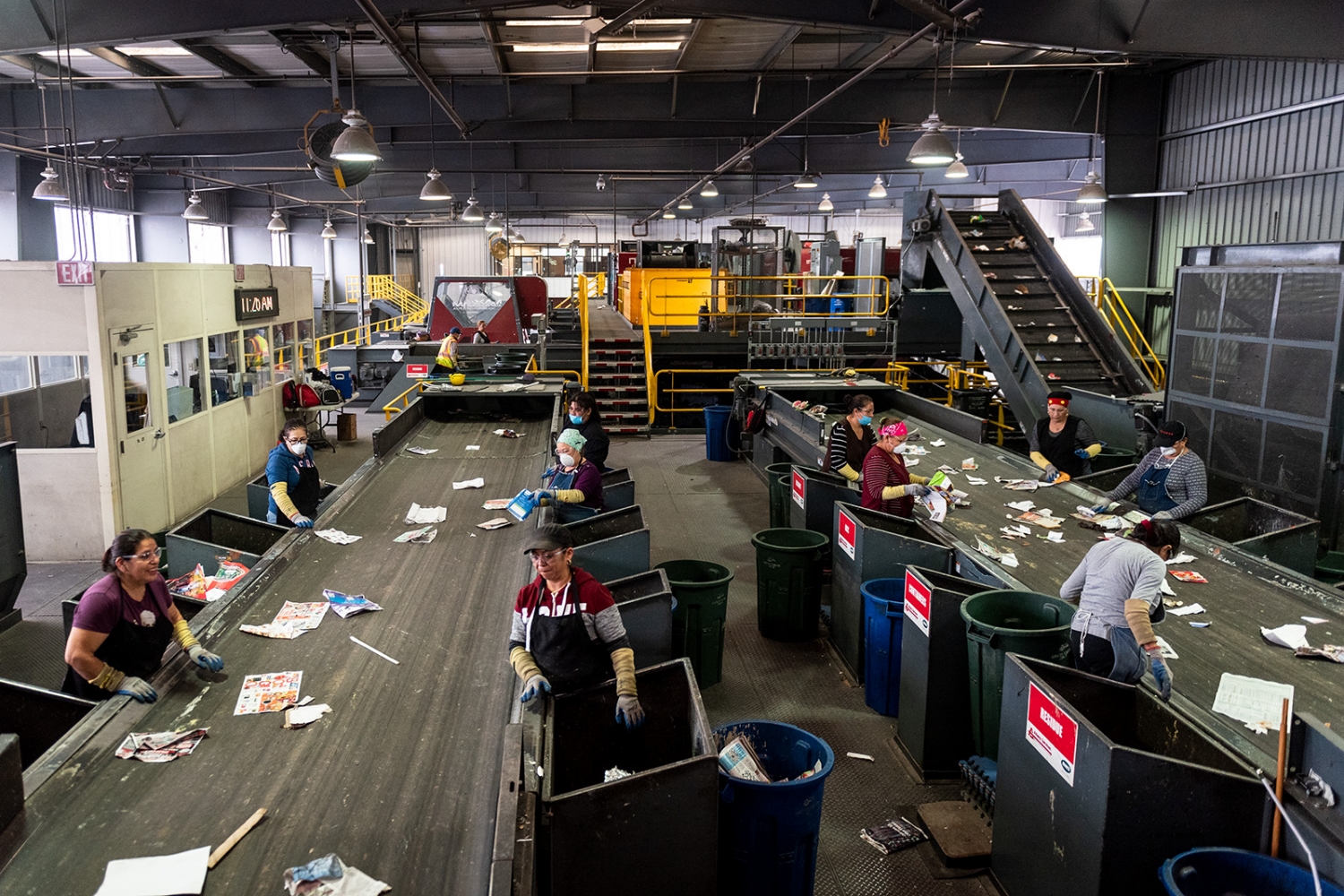
The Athens Services Sun Valley Materials Recovery Facility receives about one-seventh of the recyclables collected by the Los Angeles Sanitation Department and processes all of UCLA’s mixed recycling stream.
(Niveda Tennety/Daily Bruin)
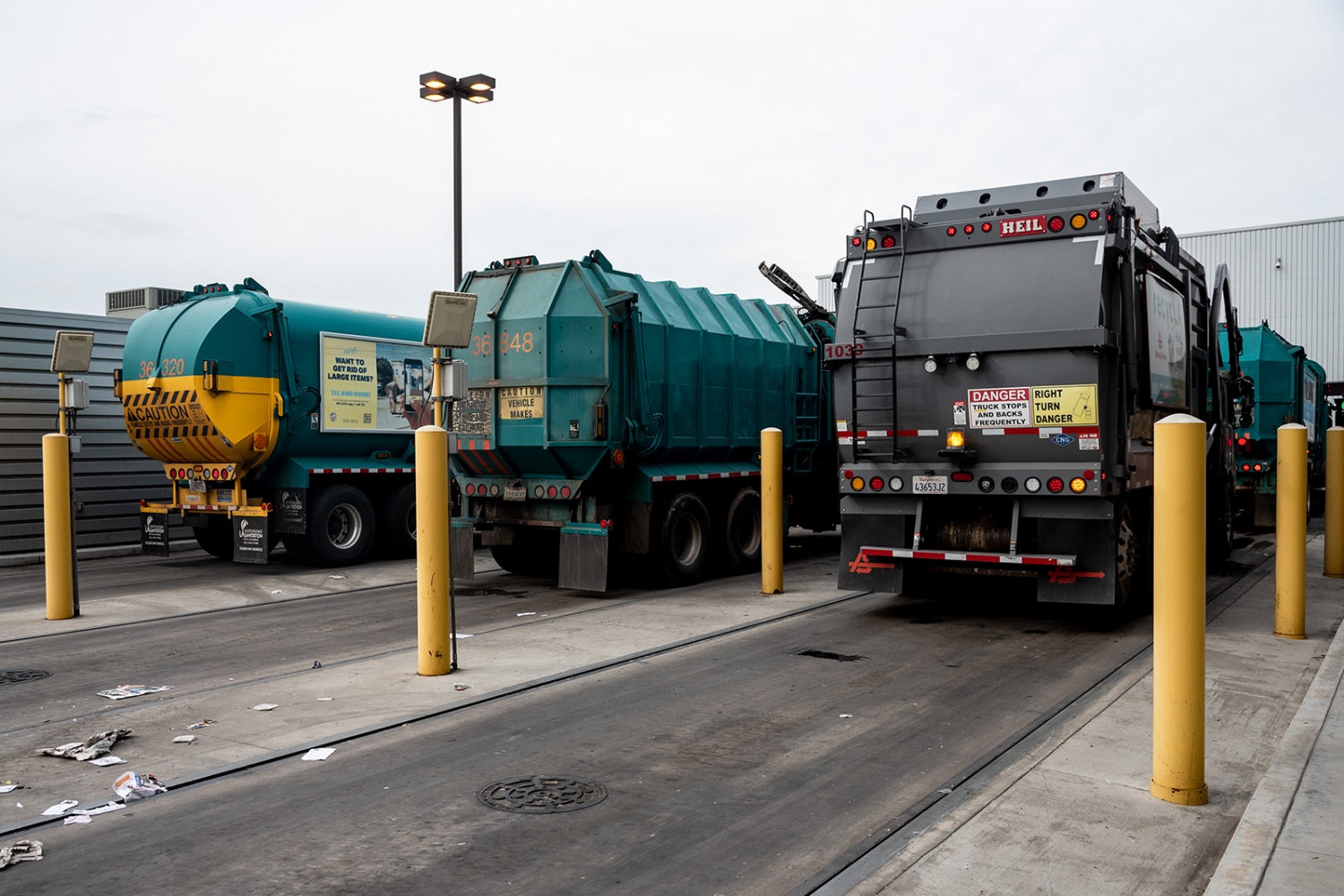
About 300 trucks deliver materials to the facility each day. Before unloading material for processing, incoming trucks go through portal monitors that detect potential sources of radiation. Radioactive materials that are disposed of improperly have the ability to contaminate processing equipment and the facility, and can be a health risk to workers.
(Daniel Leibowitz/Daily Bruin)
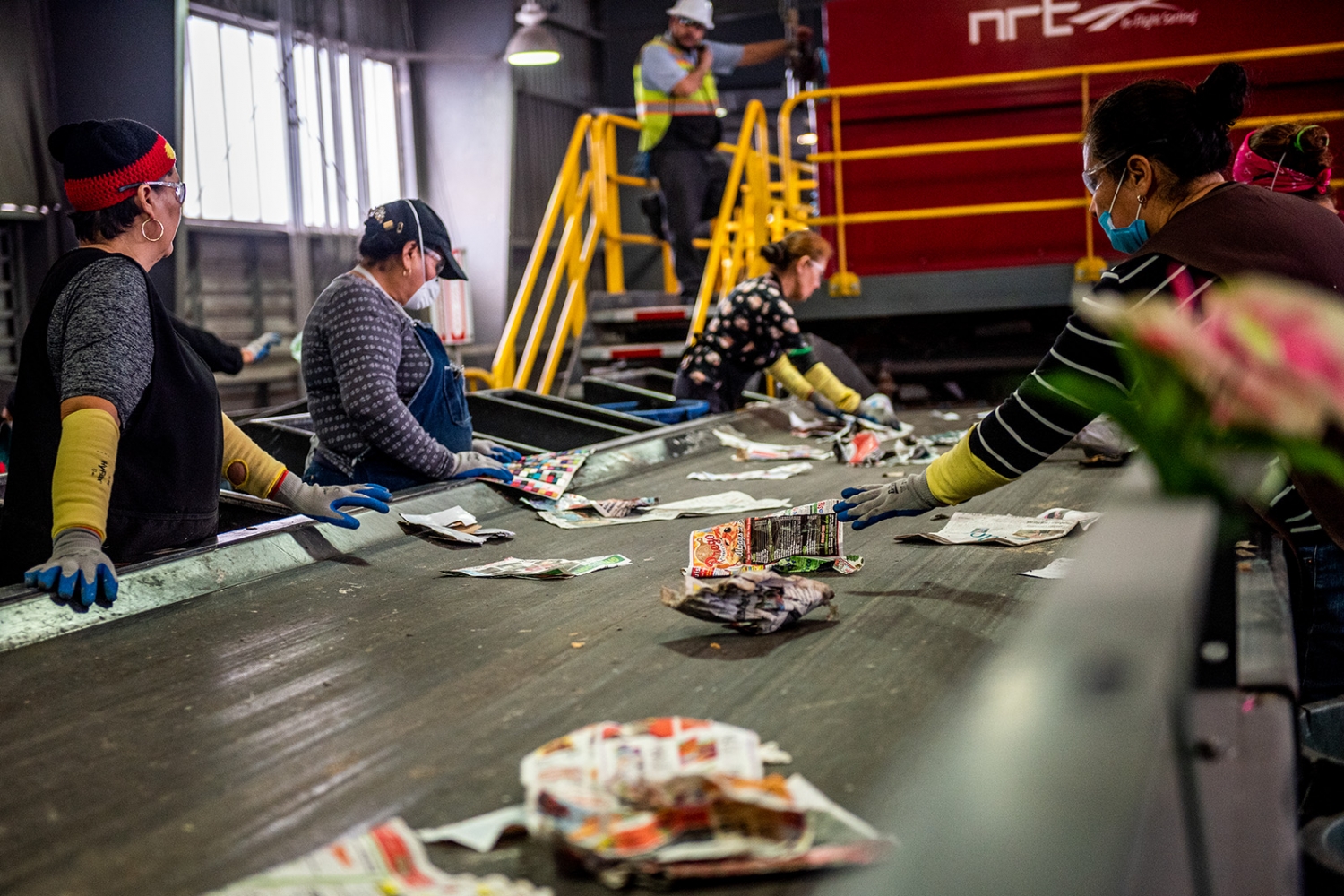
Workers in recycling plants are responsible for both sorting out nonrecyclable and hazardous materials alongside recyclables. Recycled products that are contaminated with food waste are sent directly to landfill.
(Niveda Tennety/Daily Bruin)
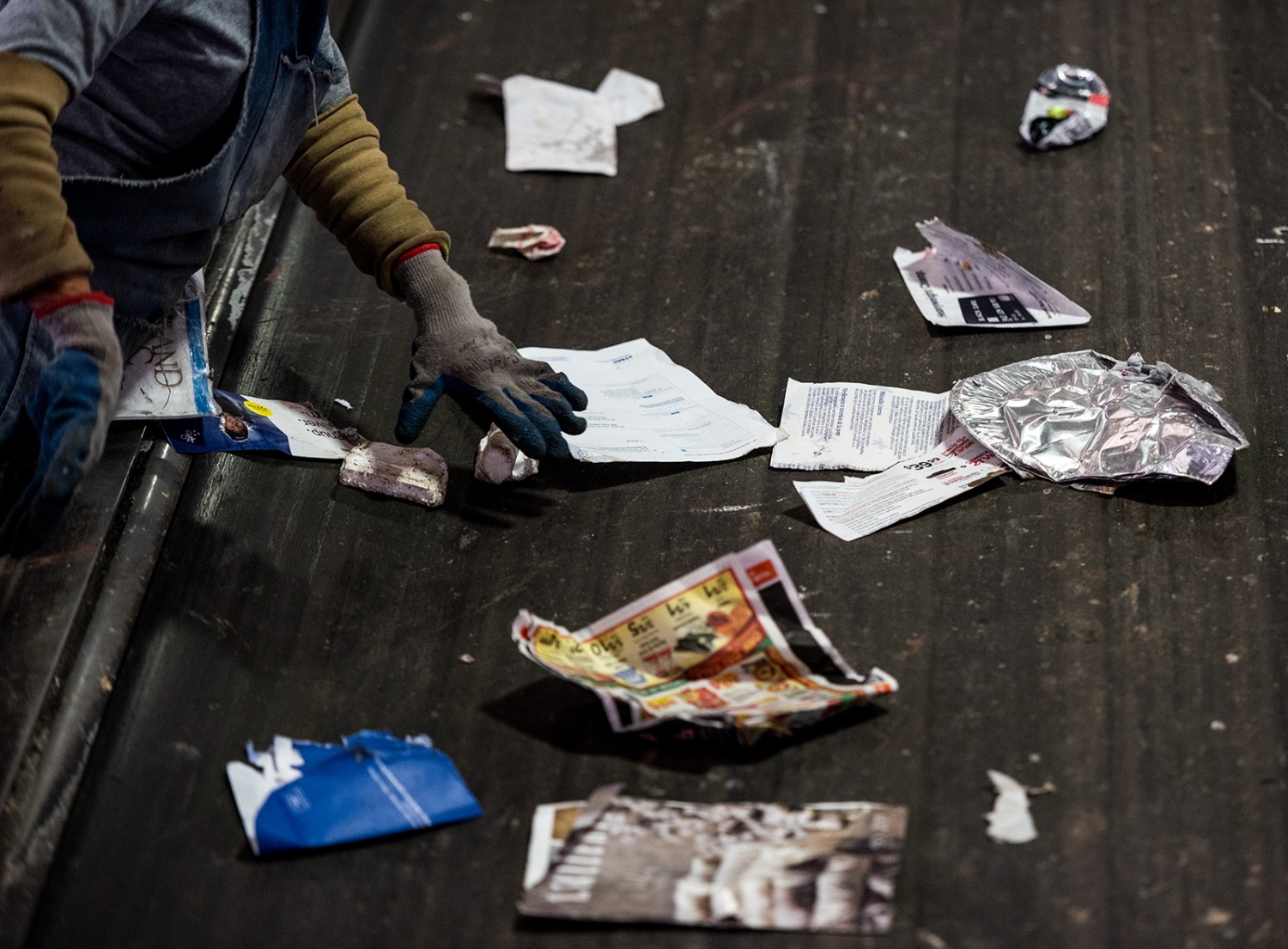
Each sorter is given safety training on handling sharp objects in the sorting line and is encouraged to wear gloves, glasses and other personal protective equipment.
(Daniel Leibowitz/Daily Bruin)
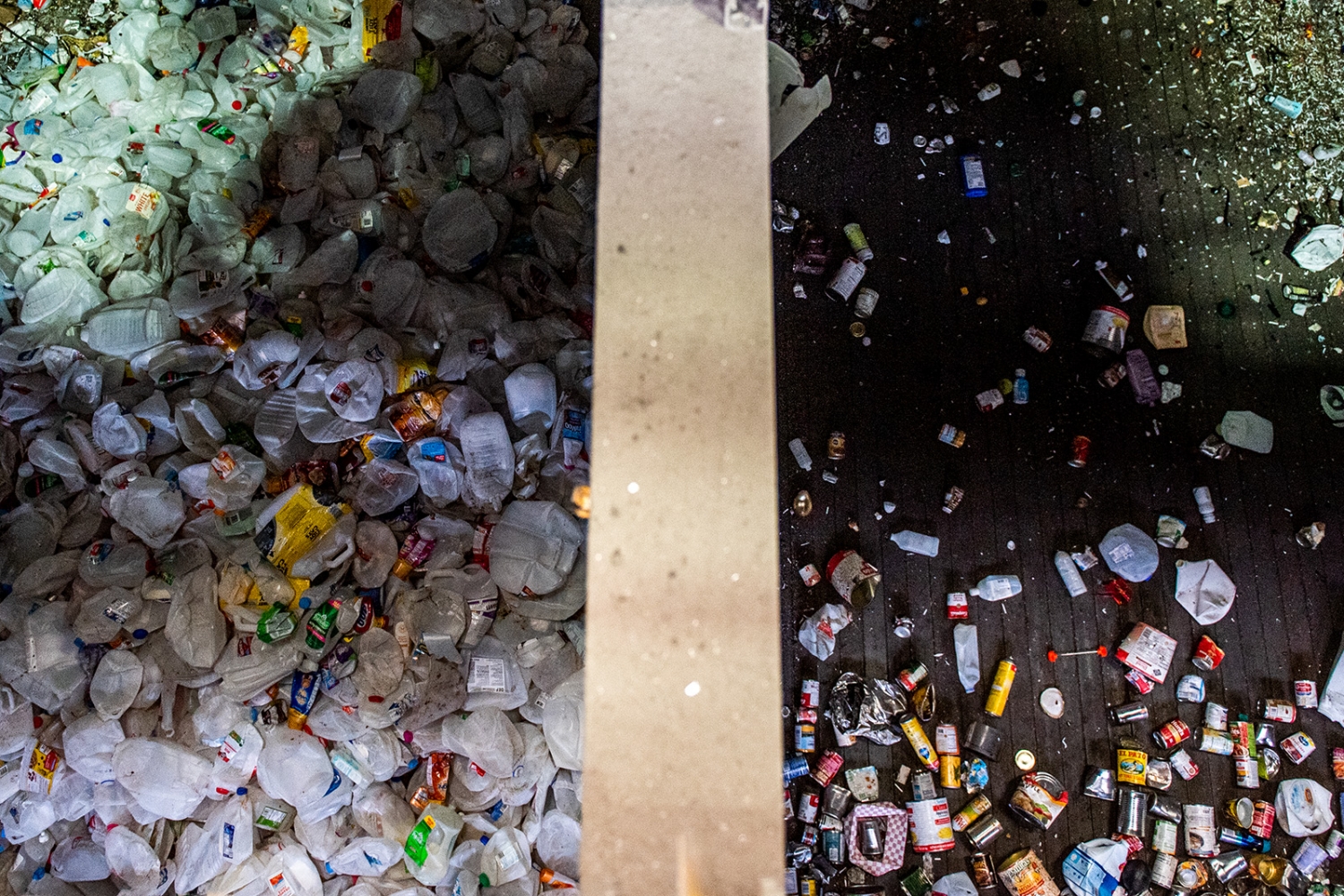
Different types of recyclables such as plastics and aluminum are separated into bunkers. General Manager Johnnie Stevenson said that the recyclables the facility sorts out to either sell to buyers or send to landfills is dependent on the changing demand in the market. ''Right now there is not a market for certain kinds of plastics. A year ago, there was,'' Stevenson said. For example, recyclable materials such as plastic film are sent to landfills because they are not purchased at the same rate by reclaimers.
(Niveda Tennety/Daily Bruin)
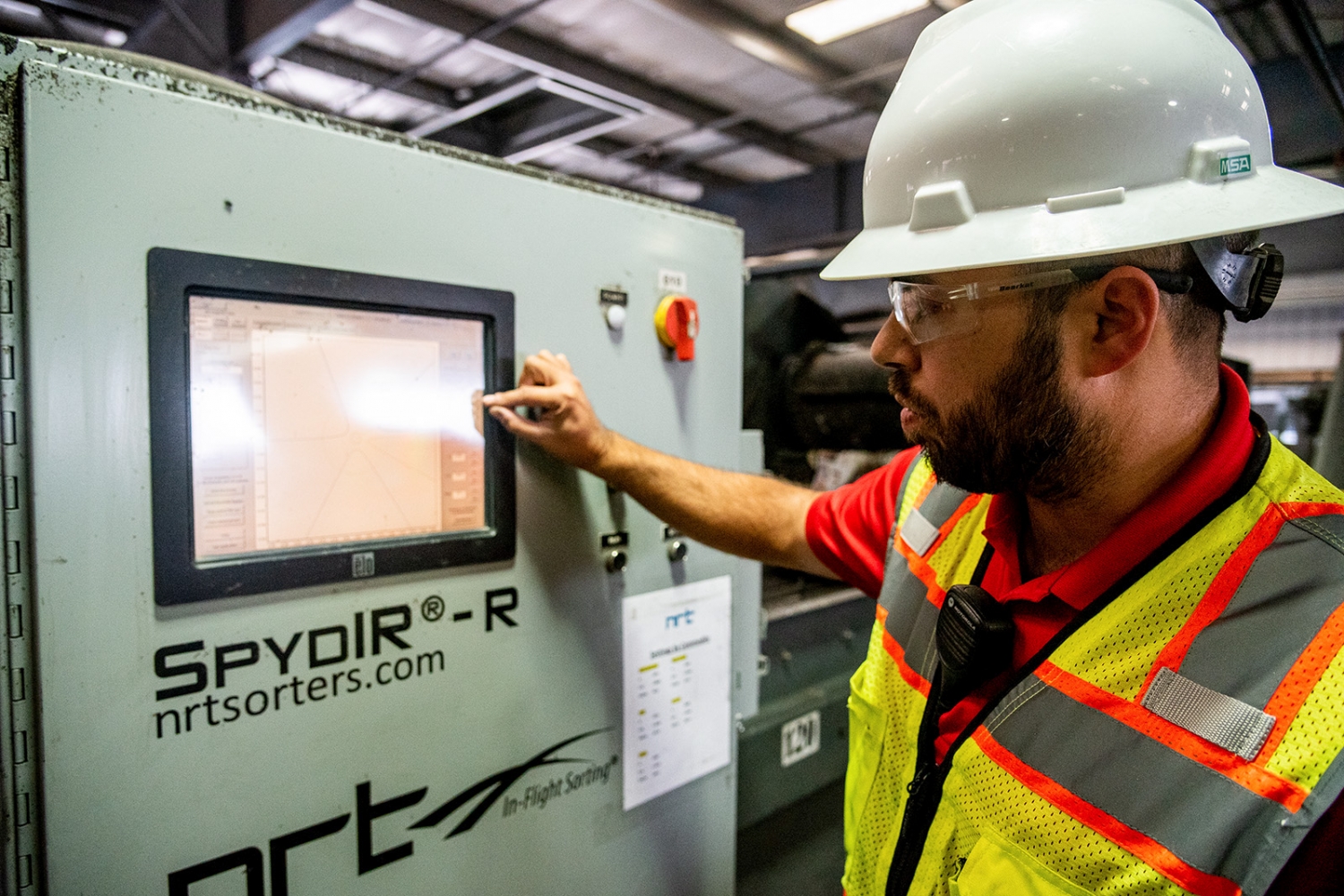
Operations Manager Valentin Zuniga demonstrates how the settings on an optical sorter can be changed to sort out various particles by type, color and size. Optical sorters separate out desired items using compressed air nozzles in a process called ''shooting.''
(Daniel Leibowitz/Daily Bruin)
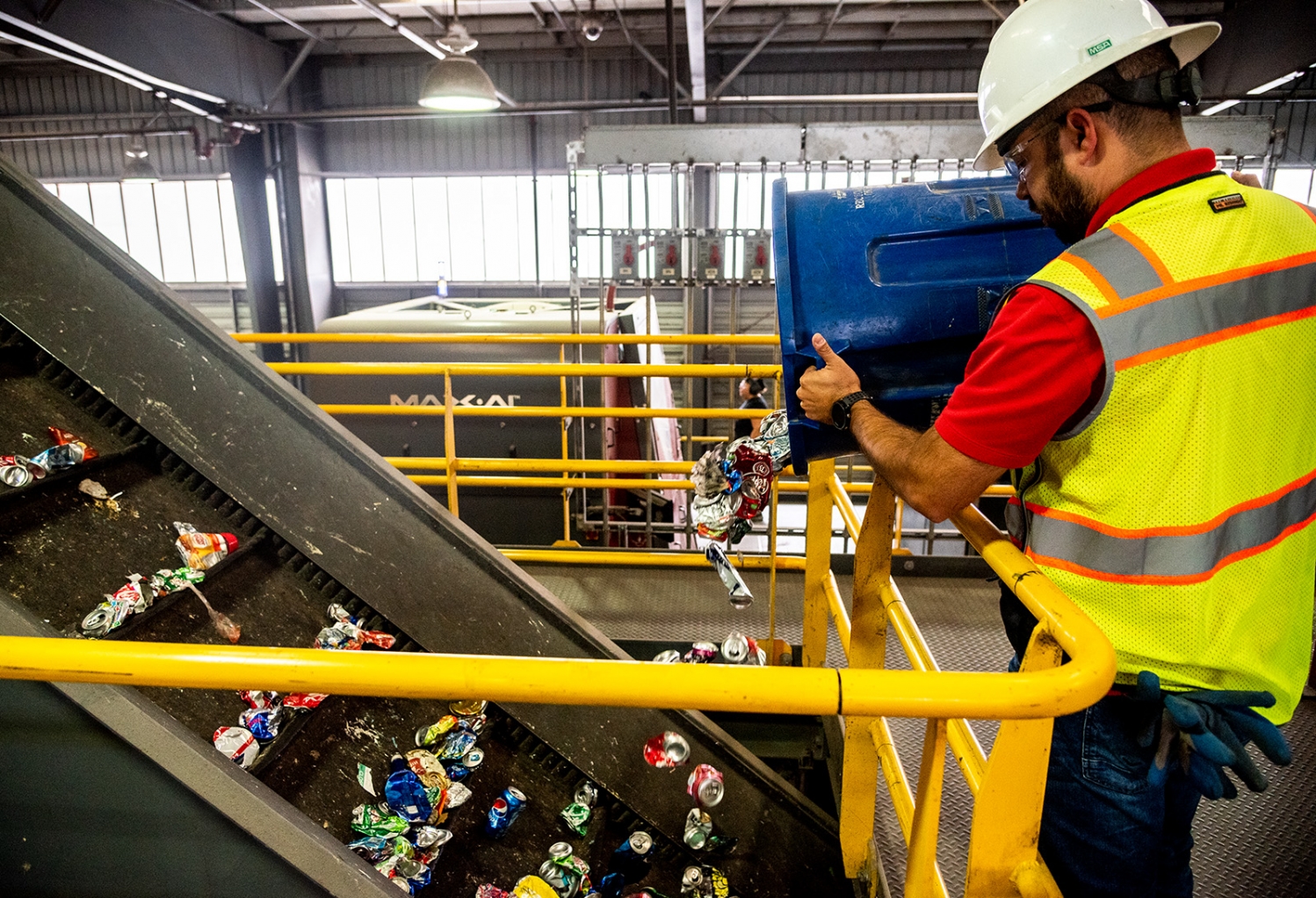
Zuniga pours aluminum cans onto a conveyor leading to a machine that separates aluminum cans from other metals.
(Daniel Leibowitz/Daily Bruin)
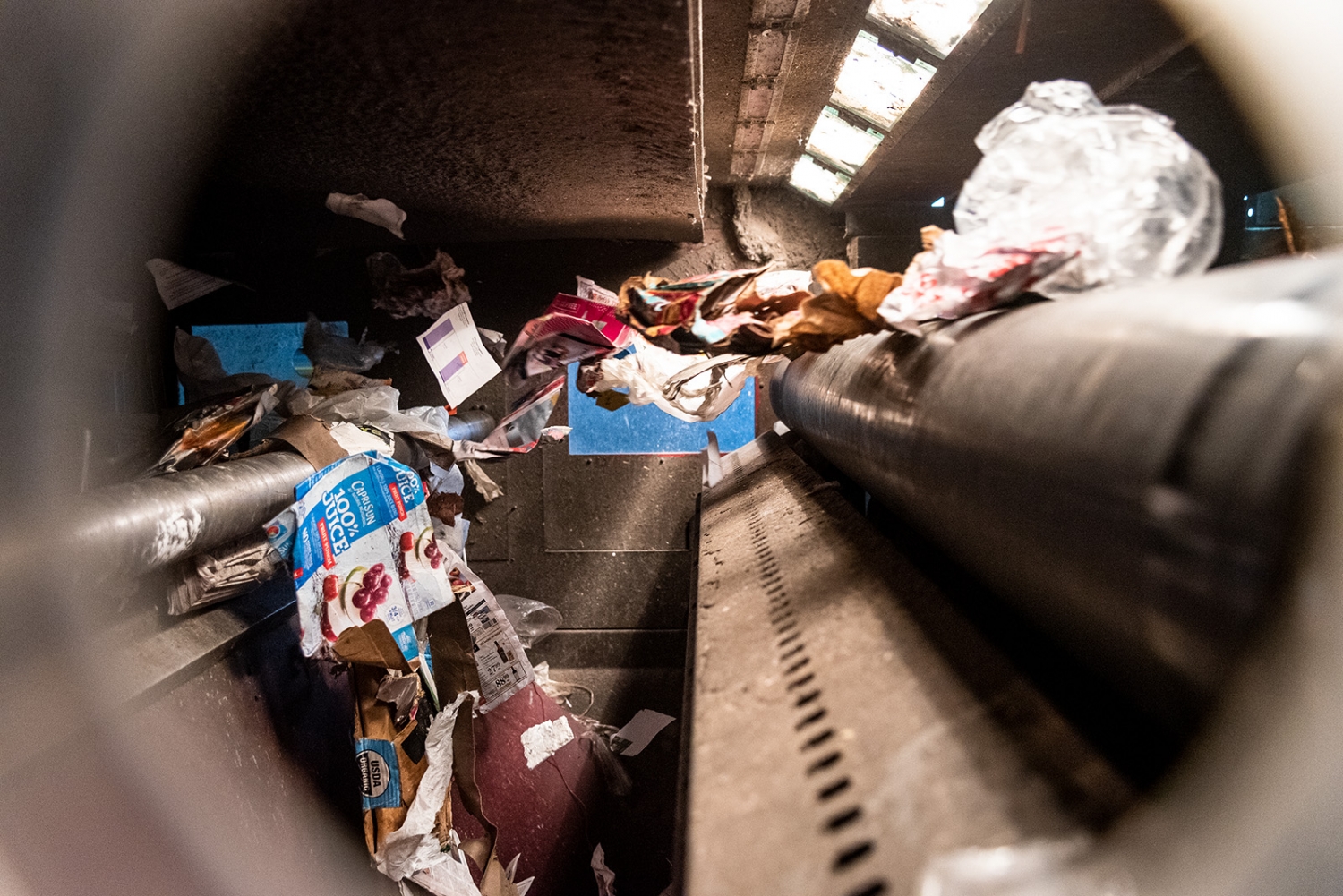
Clean paper and cardboard is recognized and sorted by an optical sorter.
(Daniel Leibowitz/Daily Bruin)
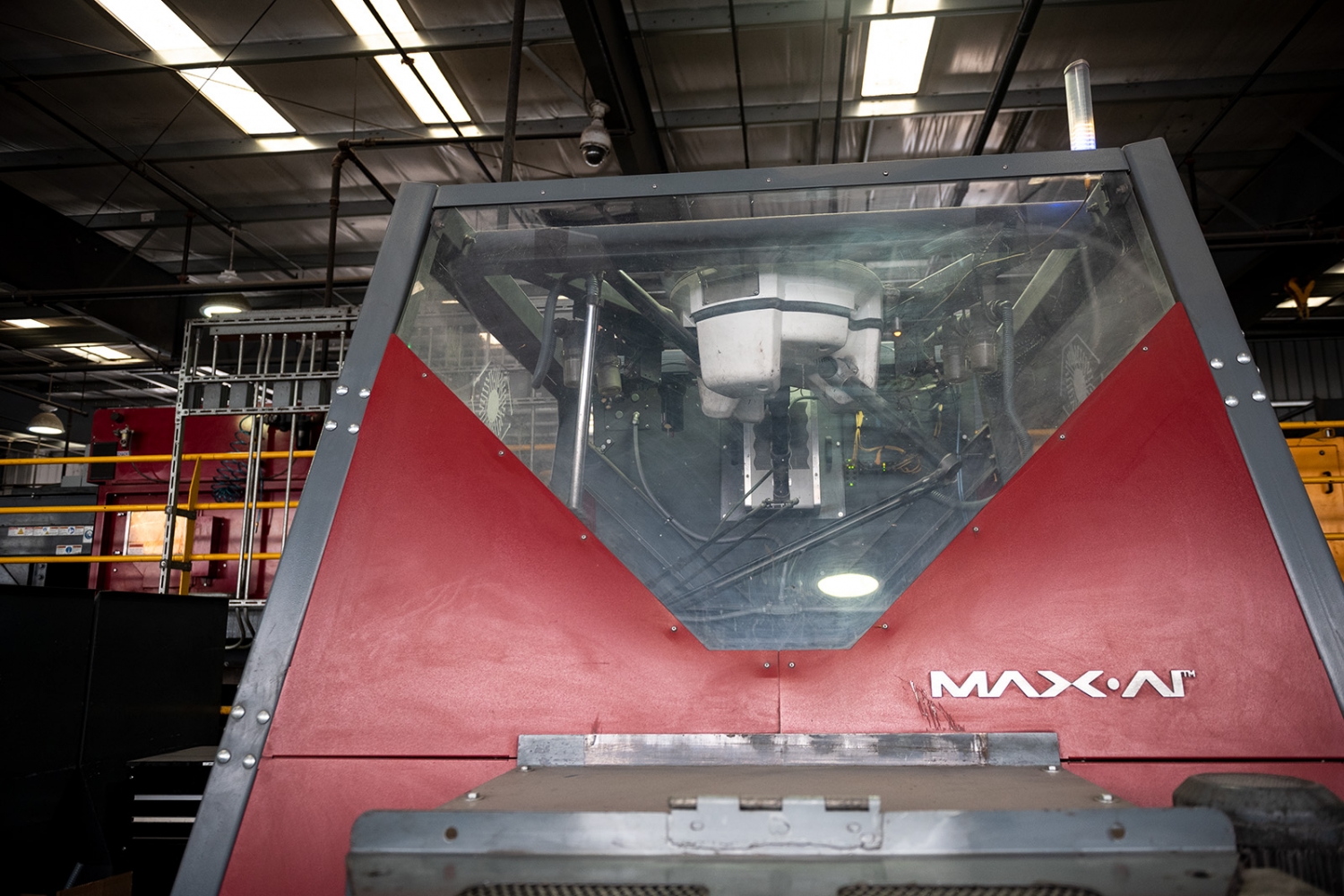
MAX-AI technology is a form of artificial intelligence that identifies and sorts recyclables for recovery through machine-learning approaches. Zuniga said that the machine is able to complete approximately twice the amount of picks as a sorter in the same time frame. Due to the increased efficiency of the machine, Zuniga said that he has observed that the demand for sorters has decreased over time.
(Niveda Tennety/Daily Bruin)
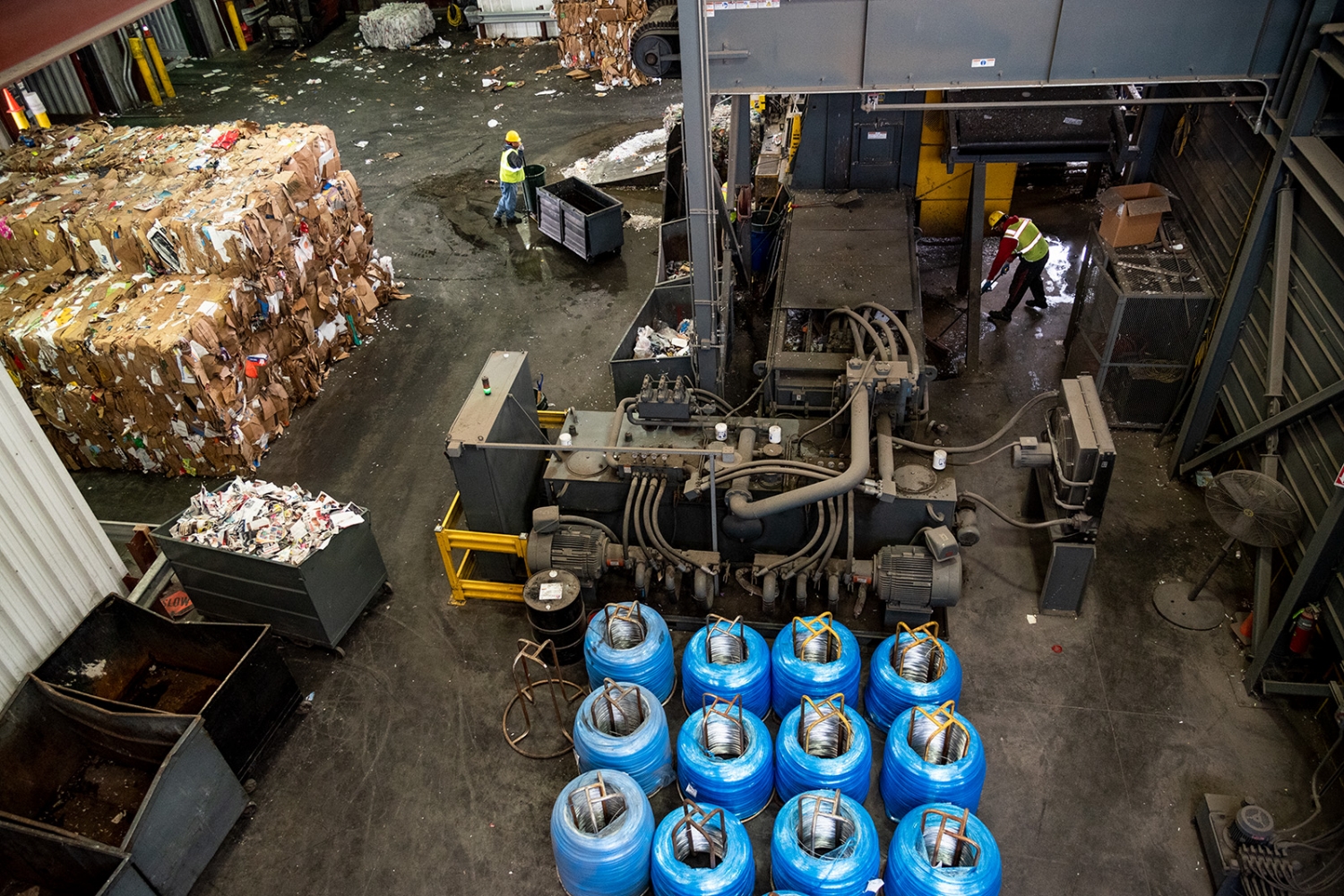
The completely sorted products are compacted into bales, which can be easily stacked and transported out of the facility.
(Daniel Leibowitz/Daily Bruin)
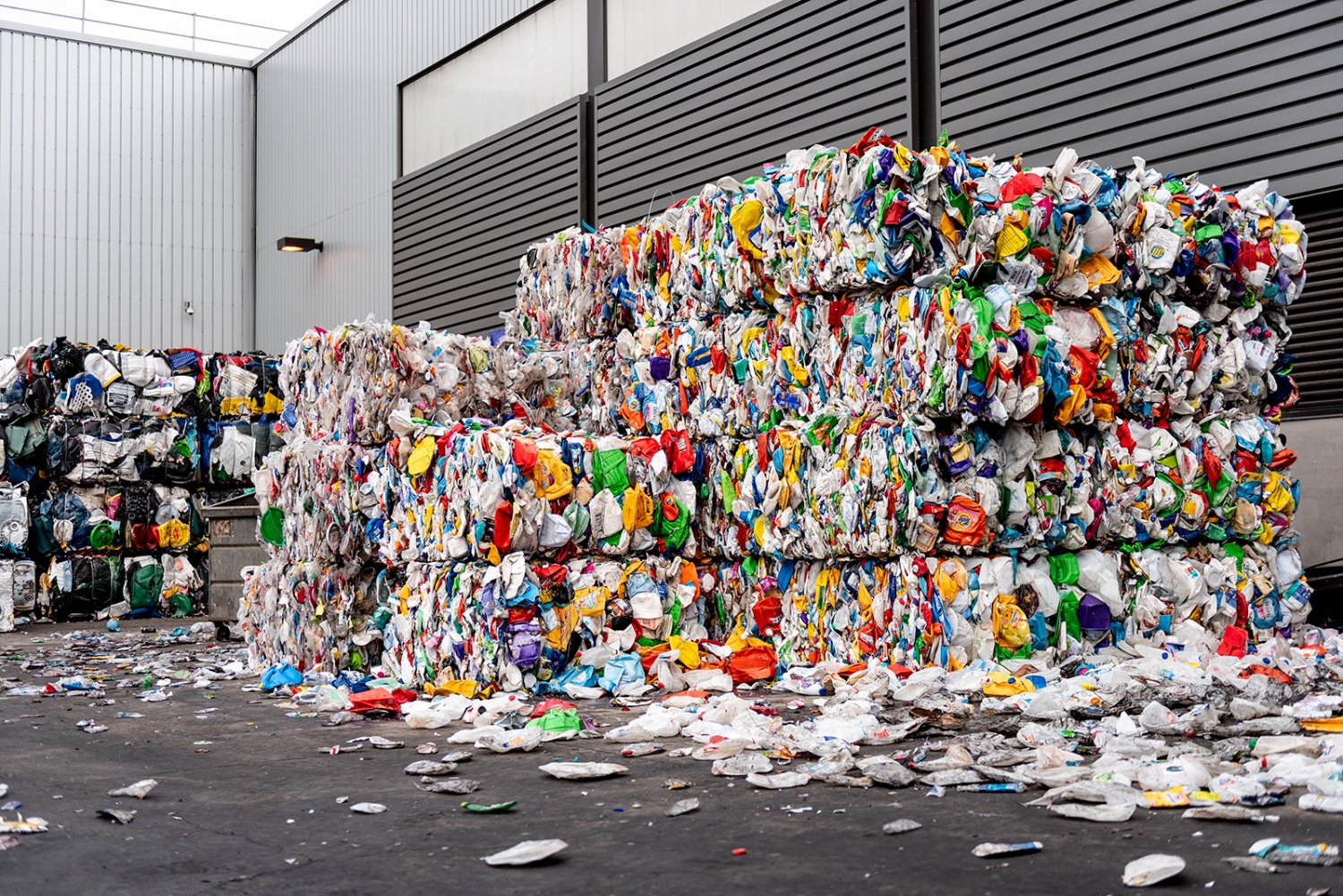
Nonrecyclable materials are transported to landfills, and sorted bales are then sent to buyers. Stevenson said that Athens Services has an economic incentive to recycle rather than divert material to landfills because they are not able to sell any material that ends up at the landfills. However, he said that prices for recyclables such as cardboard have been steadily dropping. ''The demand for recycling is just not there anymore,'' Stevenson said.


